
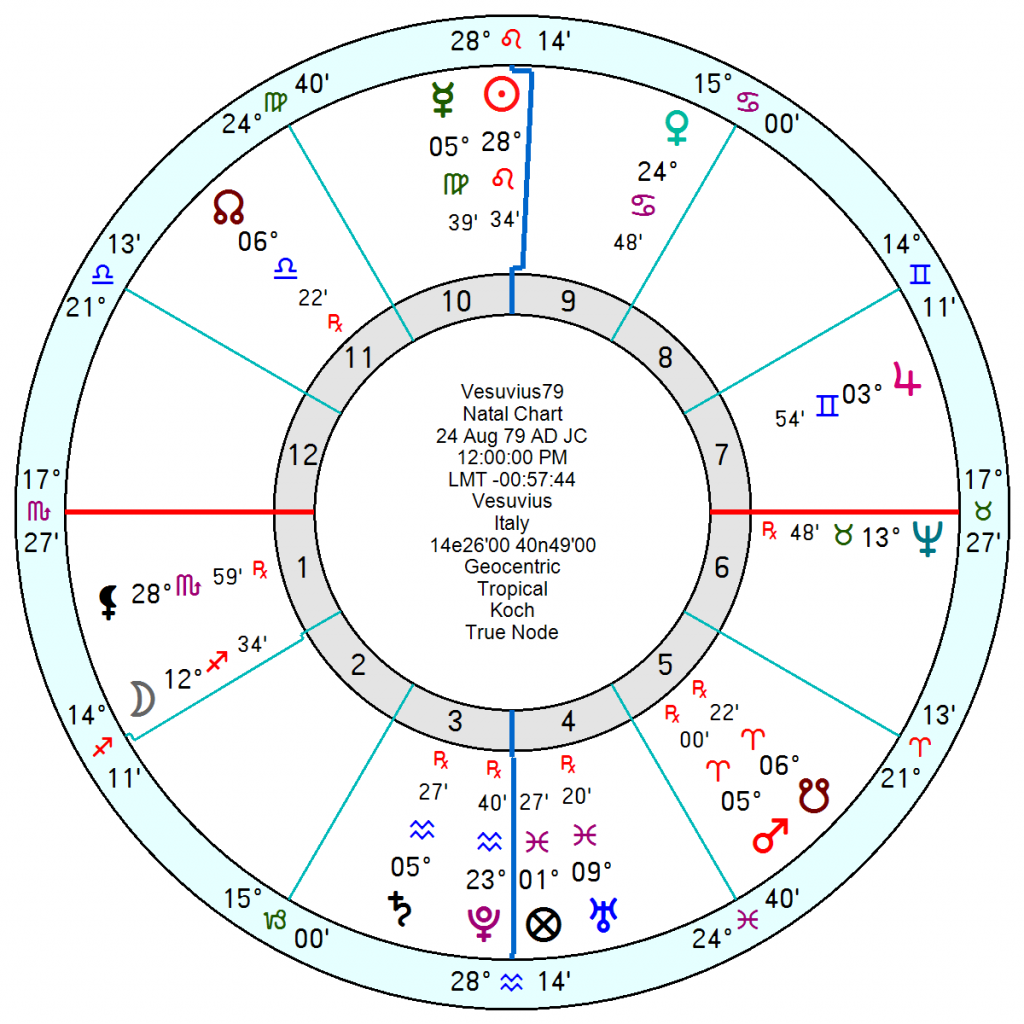
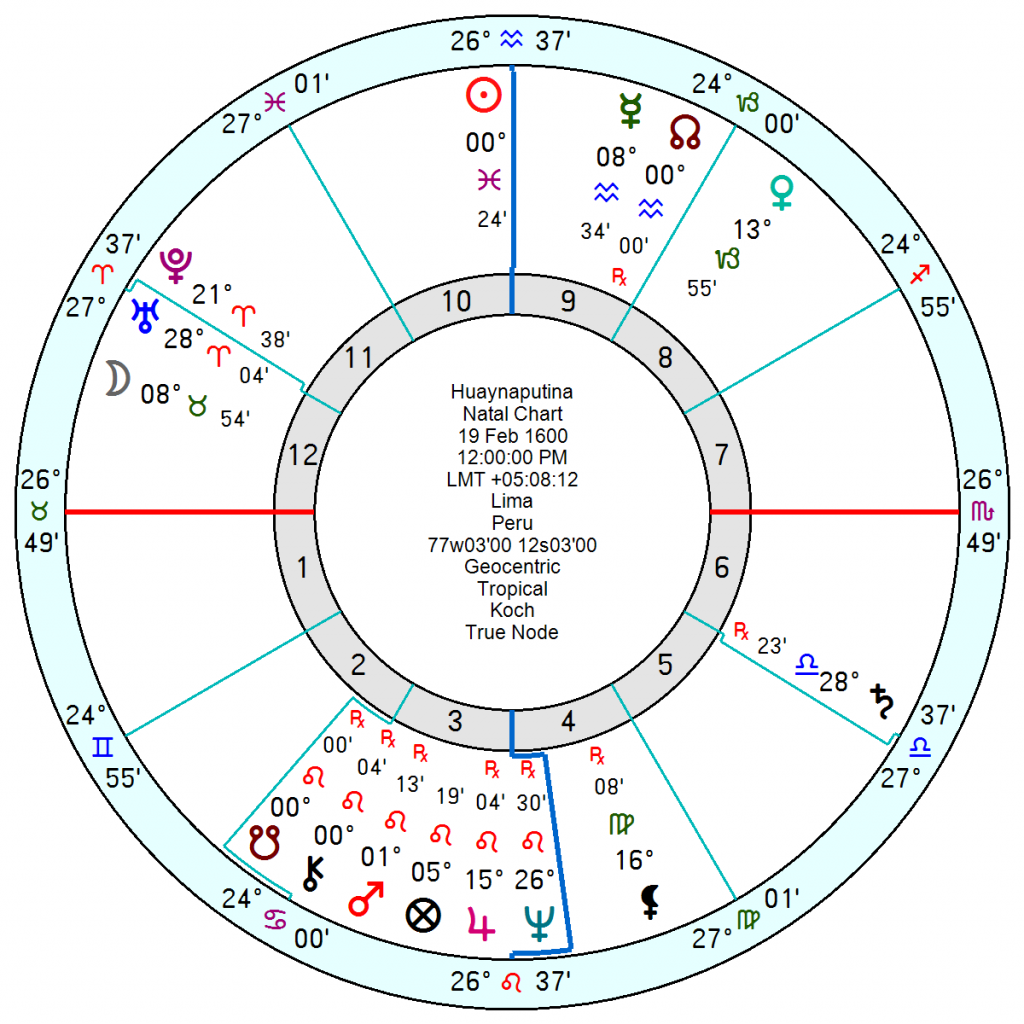
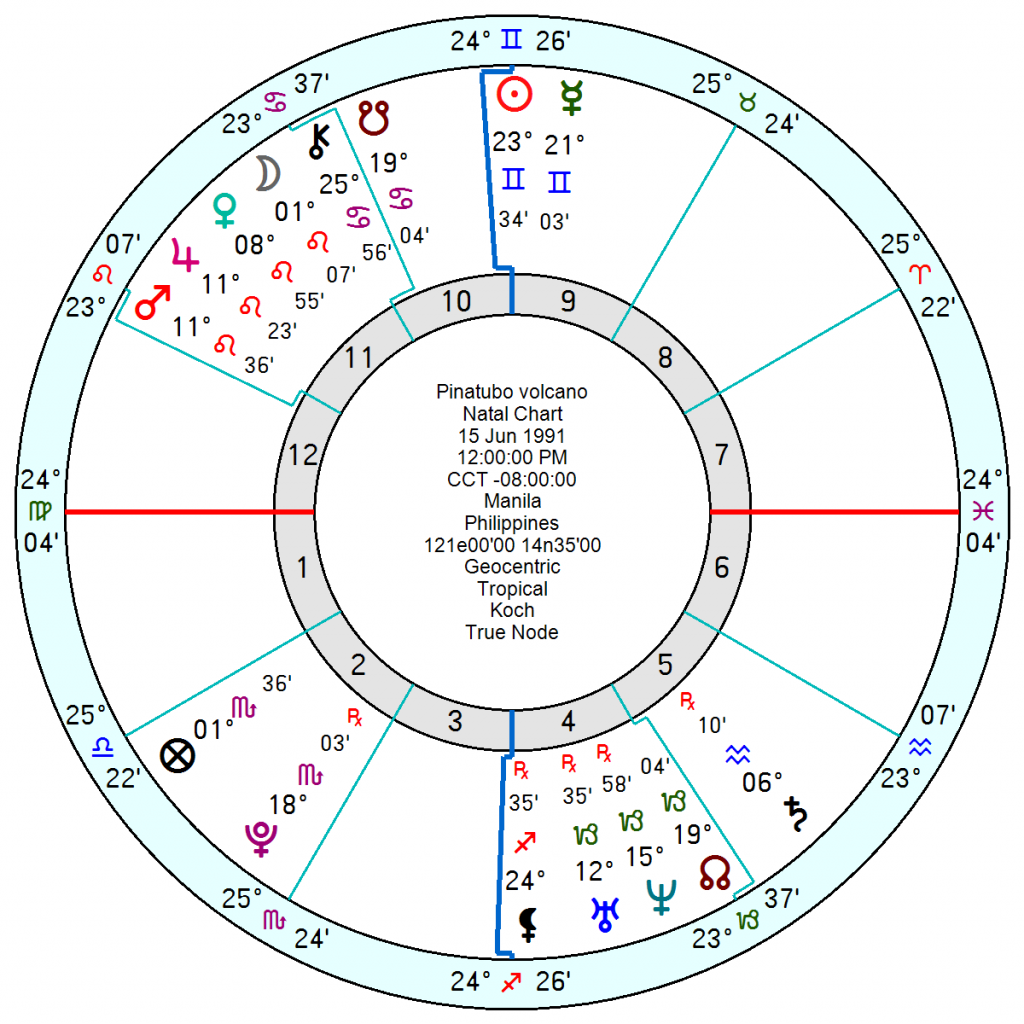
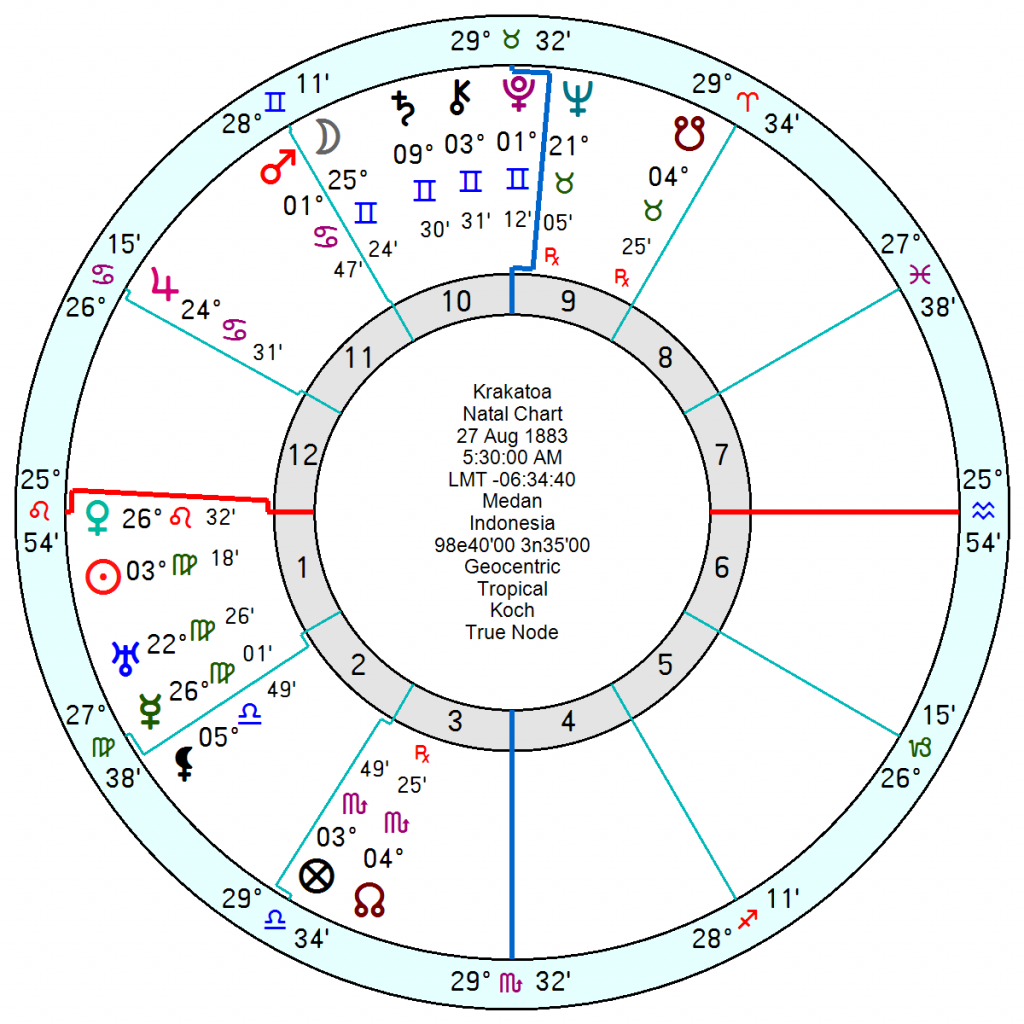
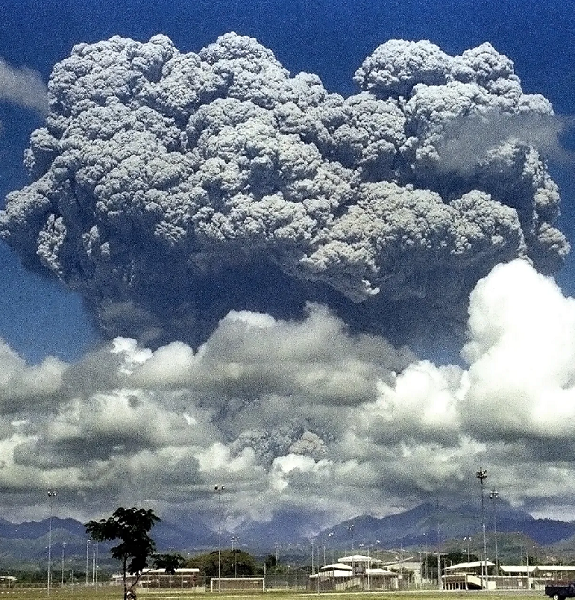
There’s nothing like good news to keep you cheerful. Luckily the astrology is the bearer of better tidings than scientists who have said there is a one in six chance of a major volcanic eruption this century which could cause abrupt climate change and the collapse of civilisations with millions of lives in danger.
The Mount Tambora eruption of 10 April 1815 in present-day Indonesia was the most powerful volcanic eruption in recorded human history. The ash from the eruption column dispersed around the world and lowered global temperatures in an event known as the Year Without a Summer in 1816, bringing extreme weather and harvest failures around the world.
In 1815/16 there was the classic natural-disaster aspect of Neptune (in Sagittarius) square Pluto (in Pisces), a rare occurrence. The next Neptune Pluto square does not occur until the early 2060s.
The Vesuvius volcano, 24 August 79 AD, was one of Europe’s deadliest, and it also happened when there was an approaching Neptune (in Taurus) square Pluto (in Aquarius). Though it did not have the global effect of Tambora.
Huaynaputina, 19 February 1600, the largest eruption ever recorded in South America had a significant impact on Earth’s climate, causing a volcanic winter: temperatures in the Northern Hemisphere decreased; cold waves hit parts of Europe, Asia and the Americas; and the climate disruption may have played a role in the onset of the Little Ice Age. Floods, famines, and social upheavals resulted.
It happened when there was a Pluto Uranus conjunction in Aries trine Neptune in Leo.
Uranus Neptune aspects are also often around over natural disasters, like the 1906 San Francisco earthquake.
The effects of the Mount Pinatubo eruption in the Philippines, 15 June 1991, were felt worldwide as it ejected more particulate into the stratosphere than any eruption since Krakatoa in 1883. Over the following months, there was a global layer of sulfuric acid haze, global temperatures dropped by about 0.5 °C in the years 1991–1993, and ozone depletion temporarily saw a substantial increase. It happened on the Uranus Neptune conjunction in Capricorn sextile Pluto.
Similar aspects were in place for the Ambrym eruption circa 50 AD, reckoned the third largest volcanic explosions in recent geological history. Pluto was sitting on the midpoint of a Uranus trine Neptune then.
Krakatoa, 27 August 1883, Indonesia, caused a volcanic winter with Northern Hemisphere summer temperatures down by 0.4 °C in the aftermath. Sulfur dioxide gas ejected into the stratosphere darkened the sky worldwide for years afterwards and produced spectacular red sunsets reflected in paintings of the time. Ships as far away as South Africa rocked as tsunamis hit them, and smaller waves were recorded on tidal gauges as far away as the English Channel. It happened on a Neptune in Taurus trine Uranus in Virgo.
The next Uranus Neptune aspects are 2038 to 2042 with Uranus in late Cancer/Leo square Neptune in late Aries/Taurus. Pluto in 2043 will move into Pisces.
In summary, Neptune Pluto hard aspects or Uranus Neptune tend to be around for major major disasters. But there is nothing imminent. Mind you they did say in the coming century – even I don’t worry that far ahead.

This is such a welcome relief from the horrors of international politics and the vulgarity of what’s happening in the UK and elsewhere. Thank you all for your input!
Leo predominates, either Sun Moon or rising in those charts.
Thank you, Marjorie. The ‘Year without a Summer’, 1816 was devastating with famine and floods in China, Cholera and Typhus in India and food shortages world wide. There was snow in June in Europe and frosts damaging crops in July. It must have seemed apocalyptic to the people of the time.
But it’s interesting to see what emerged culturally from this event. In the West, with no oats to feed horses, Karl Drais invented a horseless mode of transport which became the modern bicycle. The American Heartland was established as populations migrated to the Northwest territory as Indiana was established as a state followed by Illinois 2 years later. Among those who emigrated from Vermont was one Joseph Smith. The first science fiction novel ‘Frankenstein’ was conceived at the Villa Diodati when heavy rain kept the young Percy Shelley, Mary Godwin Wollstonecraft and their party indoors. The Romantic Movement flourished under those darkened, blood red skies giving rise to an explosion of literary, artistic and musical achievement.
The Year without a Summer is such a turning point, and it’s so interesting to think of Frankenstein emerging from that era – Neptune’s idealism and Pluto’s power and control themes in the creation of the doomed ‘creature’.
Another volcanic eruption that affected the world was the Laki volcano in Iceland. It erupted on 8th June, 1783 – February 1784, causing widespread climate changes that led to famine, death of people and animals, and the failure of crops. Some of the devastation, dire summers, and subsequent starvation caused by this eruption are thought to have increased the desperation of the French population, leading to the French Revolution, beginning in 1789. There are a number of history articles about this.
“Of the 122 Mt of sulfur dioxide released in the eruption, 95 Mt made it to the upper troposphere and lower stratosphere, so it entered the jet stream and was circulated around the entire northern hemisphere. The haze quickly reached Europe and by July 1, 1783, the haze was noticed in China.” wired.com
On 8th June, 1783, Uranus in Cancer squared Neptune in Libra, and opposed Saturn in Capricorn. Pluto in Aquarius was still trine Neptune, although it had passed the exact point.
Thanks, that is so interesting. Crisis as opportunity. You need trauma to trigger transformation. Massive collateral damage but also breakthrough for some – and the culture.
It is always something. I will try to find the original source and post it here. I understand that if we did not have the molten core with the accompanying volcanoes, then we would not have the magnetic field that surrounds the earth and protects us from the Solar Wind and Cosmic Rays. Without that – life here would have ended long ago. A good example of that is Mars.
I have been worried about the SuperVolcano in Yellowstone for a while, as periodically it will wake up. I don’t think anytime soon though. The Cascadian Fault off of Oregon is something interesting to know about, and will likely affect the USA sooner.